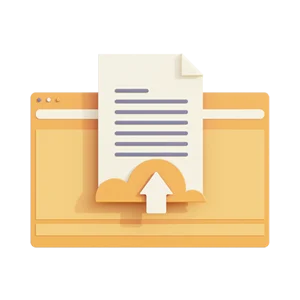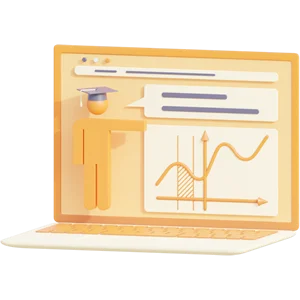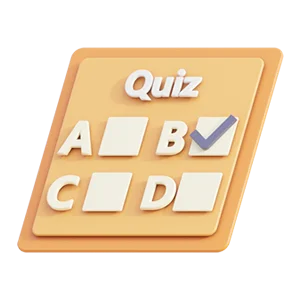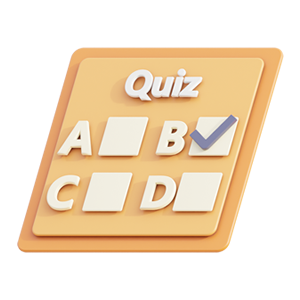APEA 3P EXAM PREP3 –NEPHROLOGY WITH RATIONALE
APEA 3P EXAM PREP3 –NEPHROLOGY WITH RATIONALE
A healthy 32-year-old female has left flank pain and nausea. What is the most likely diagnosis?
Urinary tract infection
Renal stone
Cholecystitis
Pyelonephritis
The most common presentation of acute uncomplicated pyelonephritis includes fever, flank pain, and nausea and vomiting. Sometimes patients present with symptoms of pelvic inflammatory disease (PID). In this presentation, abdominal pain is common too. Fever is so strongly correlated with acute pyelonephritis that it is unusual not to have fever. Renal stone patients may have this presentation, but fever is usually NOT present. It is unlikely that cholecystitis would present with left-sided flank pain. The gall bladder is on the right side of the body.
The incidence of pyelonephritis is:
least common in young adults.
less common than urinary tract infections.
always associated with urinary tract infections.
more likely in elderly males.
The incidence of pyelonephritis in the US is much less common than urinary tract infections (UTIs). It is less likely in males, but is most common in females aged 15-29 years; and even more common during pregnancy. Factors associated with pyelonephritis are frequent sexual intercourse, UTI within the last year, presence of diabetes, and presence of stress incontinence within the previous 30 days.
A 79-year-old female patient with urinary frequency is found to have a UTI. What medication could produce arrhythmias in her?
Doxycycline
Amoxicillin
Ciprofloxacin
Macrodantin
Ciprofloxacin is a quinolone antibiotic. All quinolones have the potential to produce prolongation of the QT interval. It should be prescribed with caution in older adults.
Mrs. Jackson complains of urinary incontinence when she laughs or sneezes. What should be used first line to treat her symptoms?
Kegel exercises
Prescribe oxybutynin
Avoid caffeine and alcohol
Minimize fluids at nighttime
This patient has stress incontinence. The first-line approach with these patients is to attempt to strengthen the pelvic floor muscles. Appropriate performance of Kegel exercises is key. Prescribing an anticholinergic might worsen incontinence because it will cause urinary retention. Avoiding caffeine and alcohol is especially helpful for people with urge incontinence, but could have a minimal benefit for this patient. However, this does not address the underlying problem, weak pelvic muscles. Minimizing fluids at nighttime will help if nocturia is a problem.
A 76-year-old male presents with urethral irritation after voiding. If sexually transmitted diseases and urinary tract infection are ruled out, what is another etiology?
Acute bacterial prostatitis
Chronic prostatitis
Epididymitis
Asymptomatic bacteriuria
Chronic prostatitis can produce these symptoms. Sometimes this is accompanied by perineal pain, but the patient may have a normal prostate exam. Acute bacterial prostatitis patients will present with fever, chills. Examination of the prostate gland reveals a tender, boggy prostate gland. Epididymitis can produce scrotal pain, not dysuria or irritation with voiding. Asymptomatic bacteriuria is asymptomatic. These patients don’t know they have this because they have no symptoms.
A 25-year-old male patient with subacute bacterial epididymitis should be treated initially with
an oral quinolone
doxycycline.
NSAIDs only.
ice and scrotal support.
In a 25-year-old male with subacute bacterial epididymitis, the most likely organism is Chlamydia. Therefore, until cultures are back, he should be treated empirically with doxycycline 100 mg BID for 10 days. Quinolones should specifically be avoided if the suspected agent is gonorrhea because of rising resistance. NSAIDs, ice, and scrotal support will help the patient’s symptoms but not treat the underlying cause.
A 73-year-old male patient reports that he is experiencing a weakened urinary stream, urinary frequency, and urgency. He is waking up once or twice nightly to urinate. How should the nurse practitioner proceed?
Digital rectal exam (DRE) only
DRE, urinalysis, PSA
PSA only
PSA, DRE, BUN, Cr
Many tests can be used to evaluate an older patient with suspected benign prostatic hypertrophy (BPH). The value of digital rectal exam (DRE) is to evaluate the size, consistency and assess for malignancy of the prostate gland. Urinalysis is done to detect blood or infection, but hematuria is common in patients with BPH. The prostate specific antigen (PSA) is done as a screening test for prostate cancer in symptomatic men. This patient has multiple symptoms which could indicate pathology in the prostate gland as the etiology of his symptoms (weakened urinary stream, urinary frequency and urgency, and nocturia). A serum creatinine can be part of the initial screening. This would help identify bladder outlet obstruction, renal, or pre-renal disease. A blood urea nitrogen (BUN) is not necessary to evaluate this patient's symptoms.
Ciprofloxacin given to treat a urinary tract infection would be contraindicated in a:
pregnant patient.
19-year-old female.
patient with hypertension.
patient with pyelonephritis.
Ciprofloxacin is a quinolone antibiotic and is contraindicated in patients who are pregnant or younger than 18 years old because of potential problems with bone and cartilage formation. There is no contraindication in a patient with hypertension. A quinolone might be a good choice in a patient with pyelonephritis and would not be contraindicated.
An example of a drug that targets the renin-angiotensin-aldosterone system is a(n):
ACE inhibitor.
beta blocker.
calcium channel blocker.
diuretic.
Examples of drugs that target the renin-angiotensin-aldosterone system are angiotensin-converting enzyme (ACE) inhibitors and angiotensin receptor blockers (ARBs). These drugs are particularly beneficial to patients with diabetic nephropathy because they may prevent and treat diabetic nephropathy. Additionally, these agents lower blood pressure, which has been shown to be renoprotective. Management of glucose levels and hypertension is especially important in preventing diabetic nephropathy, but so is aggressive management of hyperlipidemia.
Testicular torsion can produce:
penile erythema.
scrotal edema.
scrotal erythema.
penile edema.
Testicular torsion is an emergency because the testicle is deprived of normal blood supply. If blood supply is not reestablished within 12 hours, irreversible damage is certain to occur. Ideally, ischemia is resolved within 4-6 hours. The penis is not affected during testicular torsion. Besides testicular torsion, epididymitis, trauma, and an inguinal hernia are other common causes of scrotal pain.
How long should a female patient with an uncomplicated UTI be treated with an oral antibiotic?
3days
5 days
7 days
Three days of treatment with an appropriate antibiotic is as efficacious as 7-10 days of treatment. Three-day treatment is associated with fewer side effects, better adherence, and fewer adverse reactions.
A patient has a urinary tract infection. What findings on urine dipstick best describe a typical urinary tract infection?
Positive leukocytes
Positive nitrates
Positive leukocytes, positive nitrites
Positive nitrates and hematuria
Classic findings in a urinary tract infection (UTI) are positive leukocytes and nitrites. Leukocytes indicate the presence of white cells in the urine. Nitrates are a normal finding in a urine specimen. Nitrites are not normal in the urine. Positive nitrites indicate that an organism in the urine is consuming nitrates for nutrition. Hematuria indicates the presence of red blood cells in the urine. This is common in the presence of a UTI.
Which medication should be avoided in a patient with a sulfa allergy?
Sulfonylurea
Sulfamethoxazole
Naproxen
Cefazolin
Sulfamethoxazole is the sulfa component in Bactrim DS. It is contraindicated in patients with a sulfa allergy. There is no allergic potential with the antihyperglycemic agents known as the sulfonylureas. Naproxen and cefazolin have no contraindications if a patient has a sulfa allergy. Some HIV protease inhibitors have the sulfonyl arylamine chemical group that is responsible for the allergic reaction.
A female patient who is 45 years old states that she is having urinary frequency. She describes episodes of “having to go right now” and not being able to wait. Her urinalysis results are provided. What is part of the differential?
Diabetes
Lupus
Stress incontinence
Asymptomatic bacteriuria
Patients with diabetes can present with polyuria. An assessment of the patient’s risk factors should be done with strong consideration given to checking glucose levels. If this is normal, other diagnoses to consider are urge incontinence and vaginitis. The patient’s medications should be reviewed for medications producing urgency, like diuretics or herbal supplements.
A physically independent 75-year-old was diagnosed with mild cognitive impairment 6 months ago. She resides in an assisted living facility. She is in the clinic today for a scheduled visit. Her adult daughter reports that about 2 weeks ago her mother had an episode of urinary incontinence, but no known episodes since. She is found to have asymptomatic bacteriuria. How should she be managed?
Repeat the urinalysis in 7 days.
Treat her today with a one-day dose of an antibiotic.
Monitor her for symptoms of a urinary tract infection.
Repeat the urinalysis in 4 weeks.
Approximately 30-50% of older females living in institutions have asymptomatic bacteriuria. No data support treatment of patients to prevent future problems or complications. In fact, asymptomatic bacteriuria is not usually treated unless a patient is pregnant, has a chronic immunosuppressive state, is undergoing a urinary procedure, or has polycystic renal disease.
Preview document (3 of 13 pages)
Knoowy benefits
$ 43,43
 Money back guarantee
Money back guarantee
 Documents can be downloaded immediately
Documents can be downloaded immediately
 $0.50 discount when paying with balance
$0.50 discount when paying with balance
-
 Receive free quiz questions with document
Receive free quiz questions with document

Specifications
- School: Chamberlain College Of Nursing
- Course: NURSING
Document
- Section: Examinations
- Made on: 01-18-2024
- Type: .pdf
- Pages: 13
- Language: English
Tags
Seller
Helps students with ALL BEST Revision; Guides,Exams,Summaries,Test Banks ...etc.WISHING YOU SUCCESS
Earn from your summaries?
Subjects of NURSING - Chamberlain College Of Nursing
More NURSING ›ati ati comprehensive predictor ati fundamentals proctored ati nutrition ati pharmacology ati rn comprehensive predictor comprehensive fundamentals health care health care / nursing health care/ nursing hesi hesi rn exit maternal newborn med surg medical nursing medical surgical mental health nurs nursing nursing & health pediatrics pharmacology test bank tncc
 Deal: get 10% off when you purchase 3 or more items!
Deal: get 10% off when you purchase 3 or more items!
Deal: get 10% off when you purchase 3 or more items!









